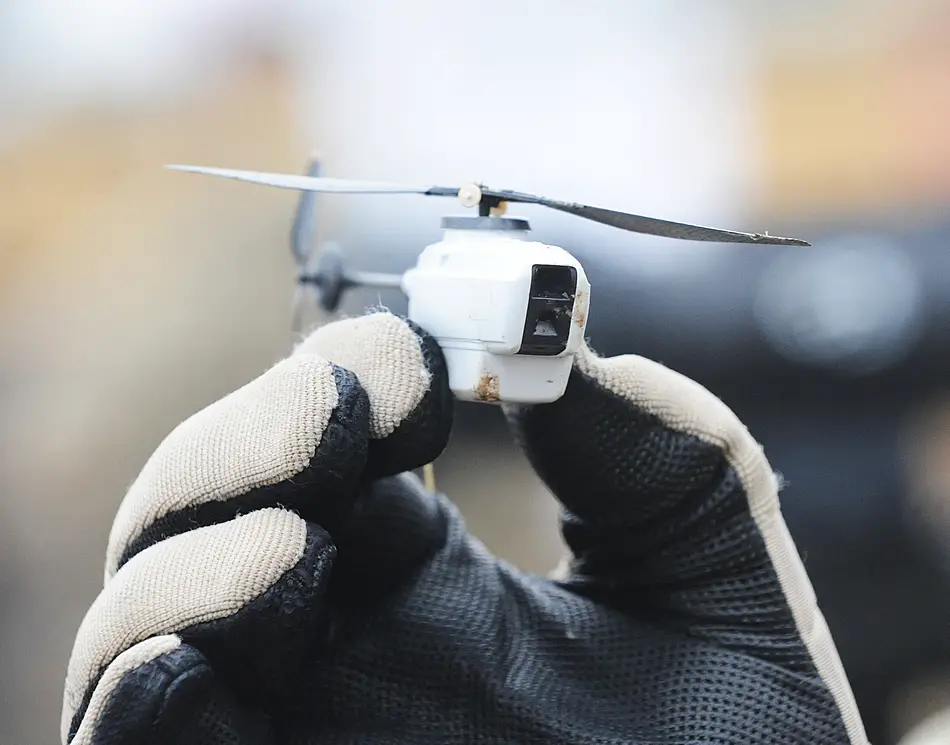 Related Article: The Tiny Terror
Related Article: The Tiny Terror
Posted: 11/01/2014
This is the 16 gr (about half an ounce) PD-100 Black Hornet. Developed in Norway and noted by the British Army, which initially ordered 200 of them and got them to Afghanistan in 2013. The tiny UAVs were an instant success.
These miniature helicopters are tiny, being 10x2.5 cm (4x1 inch) aircraft that are battery powered, very quiet and can stay in the air for 20 minutes per sortie. The rotor diameter is 12 cm (4.8 inches). The UAV is made of hard plastic and one can be ready for action in less than a minute. A complete set (two UAVs and the controller) weighs less than a kilogram (2.2 pounds). The operator can see (and capture) video and still photos on the hand held controller as the operator sends the PD-100 up to a kilometer away. The operator can zoom the camera. The PD-100 also carries GPS, a thermometer, compass and altitude sensor. Max speed is 10 meters a second (36 kilometers/22.5 miles an hour) and max altitude is about 500 meters. The body of the PD-100 is designed to handle winds well, making it quite stable for its size. It is the ultimate infantry UAV. The PD-100 is ideal in urban areas or forests. Thanks to the Internet, American troops soon found about it and how useful the nano-UAV was. So less than year after the British PD-100s arrived in Afghanistan the U.S. Army had an order in. Meanwhile the manufacturer had figured out how to get a night vision vidcam on the PD-100. So far over 3,000 PD-100s have been delivered, to military and civilian customers. The PD-100 costs about $200,000 each. It is not cheap, but it gets the job done.